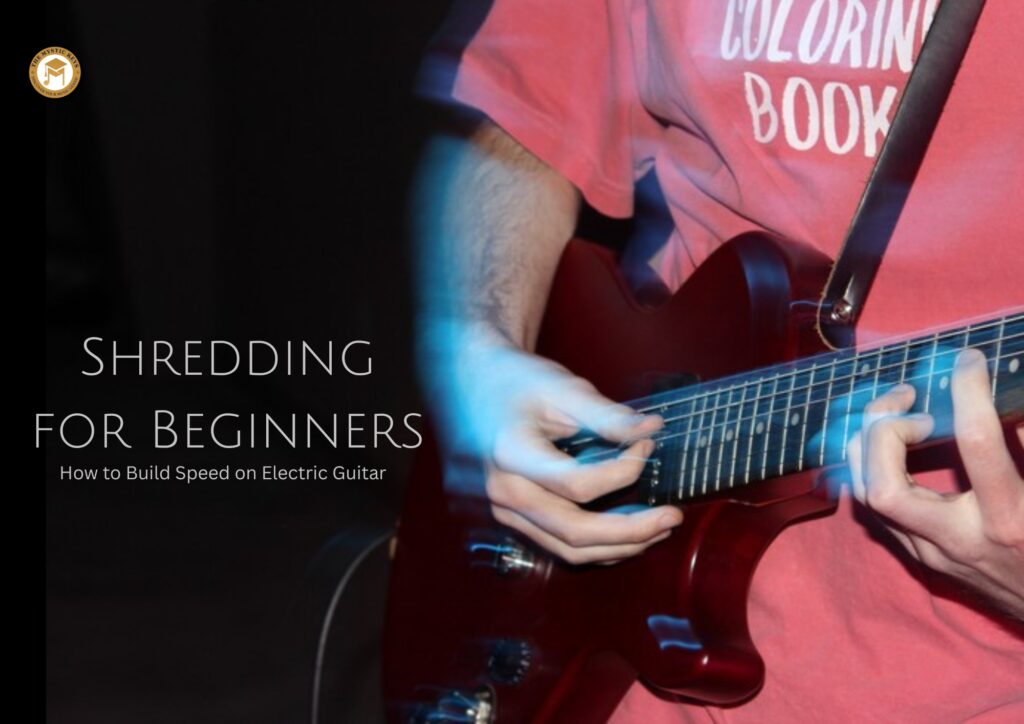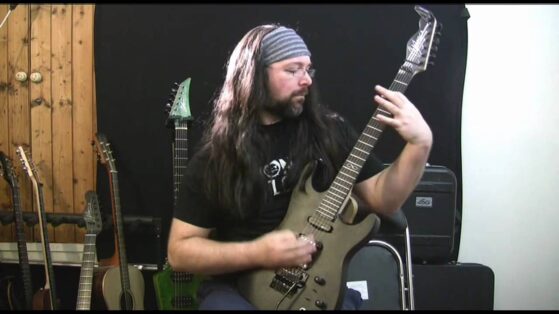
Shredding for Beginners | How to Build Speed on Electric Guitar
Shredding for Beginners | How to Build Speed on Electric Guitar
When you hear the term electric guitar shredding, it likely conjures up images of lightning-fast solos, rapid-fire fingerwork, and the kind of jaw-dropping technique made famous by rock and metal legends. It’s a thrilling and dynamic style that captures attention and leaves audiences in awe. But for those just starting out, shredding for beginners can seem like an impossible mountain to climb — intimidating, confusing, and overwhelming all at once.
The good news? Shredding is not just for seasoned pros. With the right mindset, consistent practice, and a few foundational techniques, anyone can begin developing real speed and precision on the electric guitar. Like any complex skill, it’s all about building up — step by step.
In this beginner-friendly guide, we’ll break down what shredding truly involves, explain why developing speed is more than just playing fast, and walk you through how to gradually and effectively train your fingers to fly across the fretboard. Whether you dream of soaring solos or simply want to unlock faster playing, you’re in the right place to start.

What is Shredding? More Than Just Speed
Before diving into practice tips, it’s important to set the right foundation. Shredding for beginners isn’t just about playing as fast as possible — although speed is a big part of it, it’s far from the whole story. True shredding is a blend of technical precision, control, and musicality. It demands more than rapid finger movements; it calls for clean articulation, consistent timing, and expressive phrasing.
While shredding does involve executing notes at high speed, what truly sets great players apart is the clarity of each note and the smoothness of transitions. Without these, even the fastest runs can sound messy and unrefined.
That’s why, especially if you’re just starting out, your focus should be on accuracy and control first. Speed will come — and when it does, it will come with confidence. Think of shredding as running a marathon rather than a 100-meter sprint: it’s about pacing, endurance, and refined technique. Build your foundation well, and the speed will naturally follow.

Why Build Speed on Electric Guitar?
Speed brings versatility and expression to your playing. Here are some key reasons to cultivate it:
Enhanced musical expression: Faster playing allows you to execute complex solos and riffs that express more emotion.
Improved finger strength and dexterity: Speed practice strengthens your fingers and builds muscle memory.
Confidence boost: Mastering speed techniques is rewarding and will encourage you to push your limits further.
Expanded stylistic possibilities: From metal to jazz fusion, speed can open doors to many genres.

Getting Started | Foundational Techniques for Speed
1.Master Proper Hand Positioning
Your hand positioning greatly influences your ability to play fast. Make sure your thumb is placed behind the neck, roughly opposite your middle finger, giving your fingers maximum reach and flexibility.
Additionally, your picking hand should be relaxed, using a controlled wrist movement rather than a stiff arm motion. Tension is the enemy of speed — so keep your hands loose!
2. Use a Metronome Religiously
A metronome is your best friend when building speed. It helps maintain timing and forces you to play cleanly at slow tempos before gradually increasing speed.
Start slow, focusing on perfect accuracy and note clarity. Increase the tempo by small increments — say 5 bpm — only after you can play the passage flawlessly.

Core Speed-Building Exercises
1. Alternate Picking
Alternate picking — using a strict down-up-down-up motion — is essential for shredding. It’s much more efficient than using only downstrokes.
Begin by practicing simple chromatic scales or single-string exercises using alternate picking at slow tempos. Gradually speed up while maintaining consistency.
2. Finger Independence Exercises
Your fingers need to work independently and fluidly to play fast. Practice exercises like the “1-2-3-4” chromatic scale pattern:
Play fret 1 with your index finger,
fret 2 with middle finger,
fret 3 with ring finger,
fret 4 with pinky,
On each string, moving sequentially and back.
This builds strength and coordination.
3. String Skipping and Economy Picking
Once comfortable with alternate picking, experiment with string skipping — jumping over one or more strings while maintaining picking accuracy. This expands your shredding vocabulary.
Economy picking combines alternate and sweep picking to minimize motion and maximize speed. Though more advanced, beginners can start by incorporating small economy picking patterns gradually.

Overcoming Common Beginner Challenges
Avoiding Tension and Fatigue
One common hurdle beginners face when trying to play fast is unintentionally tensing up. This tension not only slows down your playing but can also lead to fatigue and, in some cases, even injury. To prevent this, it’s important to listen to your body and take proactive steps. For instance, taking frequent breaks during practice sessions allows your muscles to relax and recover. Additionally, gently shaking out your hands and fingers can release built-up stiffness. Equally important is maintaining a relaxed posture throughout your playing — a loose and natural stance helps keep tension at bay and promotes fluid movement.
Maintaining Accuracy Over Speed
While the desire to shred at high speeds can be strong, it’s crucial to remember that speed alone is not the goal. Rushing often results in sloppy notes and muddled phrasing, which ultimately diminishes the musicality of your playing. Therefore, always prioritize clean and precise execution over merely hitting fast tempos. By focusing on accuracy first, you build a solid foundation that allows speed to develop naturally and musically. In other words, speed without accuracy is meaningless — so take your time to perfect each note, and the speed will follow in due course.

Building Speed Step-by-Step | A Practice Routine
Shredding for beginners isn’t about jumping straight into blistering solos — it’s about developing the control, precision, and muscle memory that will eventually unlock serious speed. This guided routine offers a simple yet powerful way to build your foundation, with each step leading smoothly into the next.
Warm-Up Slowly
Every shredding journey begins with a solid warm-up. Start your session by gently stretching your fingers, then move into slow chromatic exercises. This not only prepares your muscles but also minimizes the risk of strain — especially important for beginners working toward faster techniques.
Practice Scales and Patterns
With your hands warmed up, it’s time to dive into scale practice — a core part of any shredding routine. For beginners, the minor pentatonic or natural minor scale is ideal. Use alternate picking as you play each note slowly and cleanly. This step lays the groundwork for speed by syncing both hands and developing fretboard familiarity.
Use the Metronome to Increase Tempo
Speed means nothing without control — and the metronome is your secret weapon. After you’ve played a scale smoothly at a slow tempo, begin increasing the tempo gradually (3–5 bpm at a time). Shredding for beginners is about steady growth, and the metronome ensures that growth is clean and consistent.
Add Variations to Expand Technique
Now that you’re comfortable with basic patterns, it’s time to add flavor — and a little challenge. Include hammer-ons, pull-offs, string skipping, and slides into your practice. These techniques add musicality and improve fluidity — key components in the shredding style, even at beginner levels.
Cool Down and Reset
To close your session, return to slow playing. Repeat a few familiar licks or play some mellow phrases to cool down your muscles. Stretch your fingers once more and take a moment to reflect on your progress. Shredding for beginners is all about the journey — celebrate small wins and look forward to the next step forward.

Tools and Resources to Support Your Journey
Using Guitar Pro or tablature software allows you to clearly visualize scales and licks, making it easier to learn and memorize complex patterns. Building on that foundation, practicing with backing tracks lets you apply those scales in a musical context, helping you develop timing and feel while shredding over real music. To deepen your understanding, watching video tutorials is invaluable — seeing professionals demonstrate techniques can inspire and guide your own practice. Finally, leveraging recording apps enables you to track your progress over time and identify areas that need improvement, ensuring your speed-building journey stays on the right path.

Staying Motivated Through the Journey
Learning to shred fast is a marathon, not a sprint. Celebrate small milestones like cleaner picking, faster tempos, or smoother transitions. Join online communities or find a guitar buddy to share progress and tips.
Remember, every great shredder started where you are now — with a single note played slowly and carefully.

Final Thoughts
Shredding on electric guitar is an exciting goal for any beginner, but it requires patience, discipline, and proper technique. By mastering the fundamentals, practicing methodically with a metronome, and maintaining a focus on accuracy, speed will come naturally.
At The Mystic Keys, our Electric Guitar Lessons Online are designed to guide you through this journey — from basic technique to blazing-fast solos — with personalized instruction and structured practice plans.
So pick up your guitar, set a comfortable tempo, and start your journey toward shredding mastery — one note at a time, with us by your side.
For more information and exciting resources about learning music, visit our website at The Mystic Keys. For more music content and exciting offers follow us on
Facebook, Instagram, YouTube, LinkedIn, Twitter, Pinterest, and Threads,

